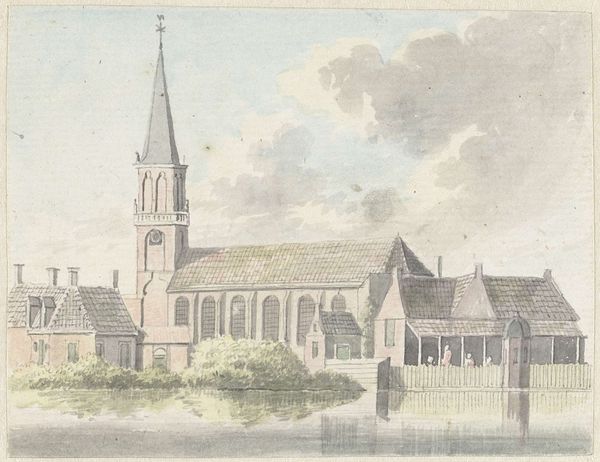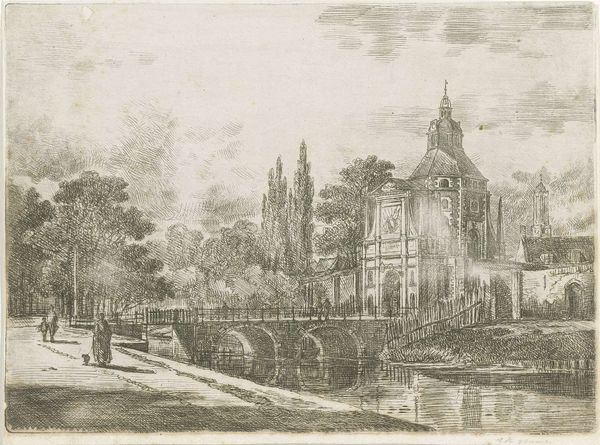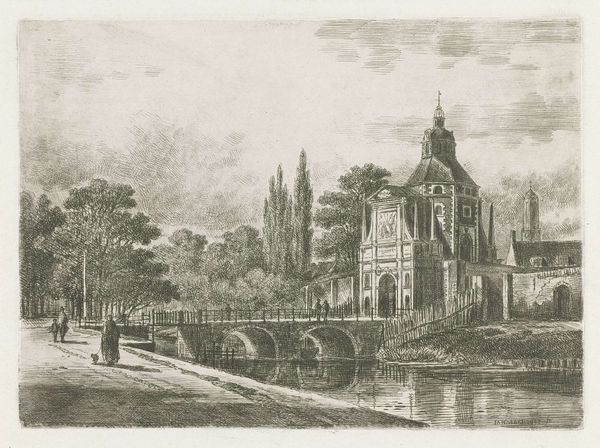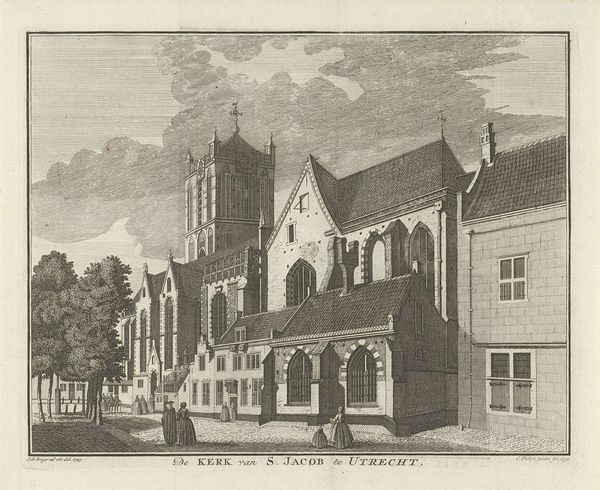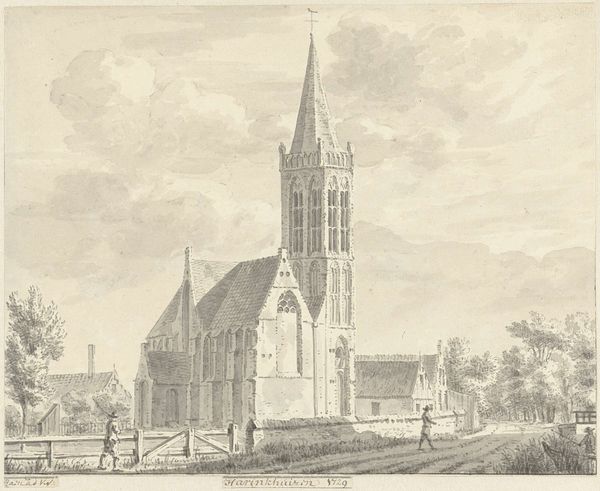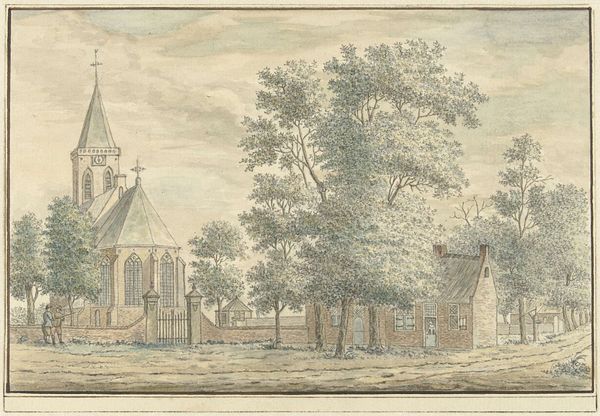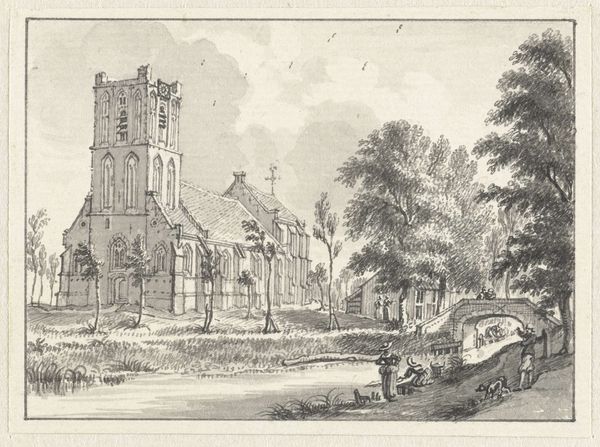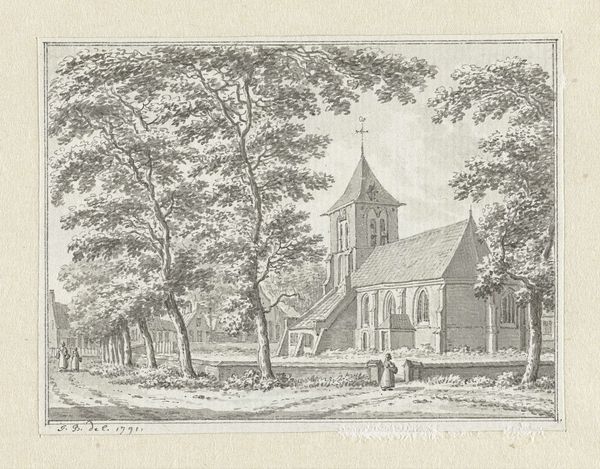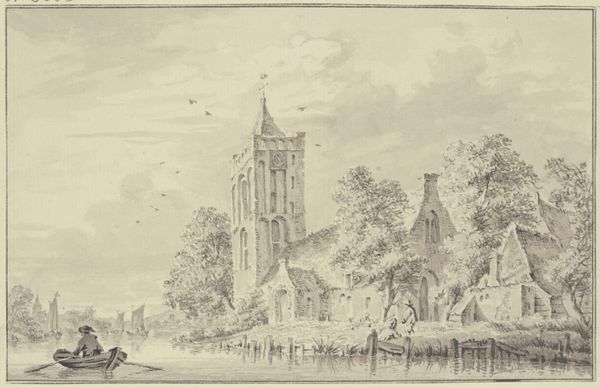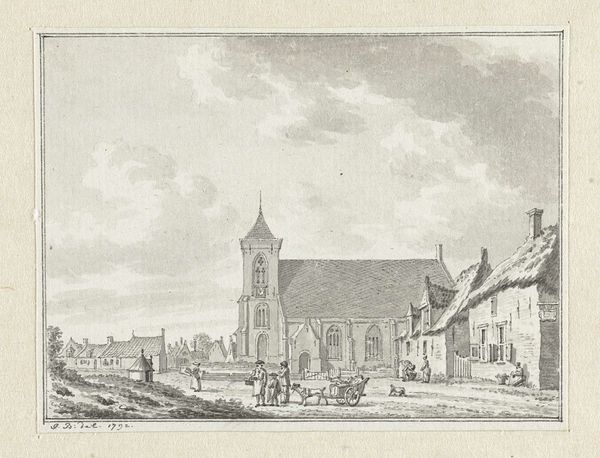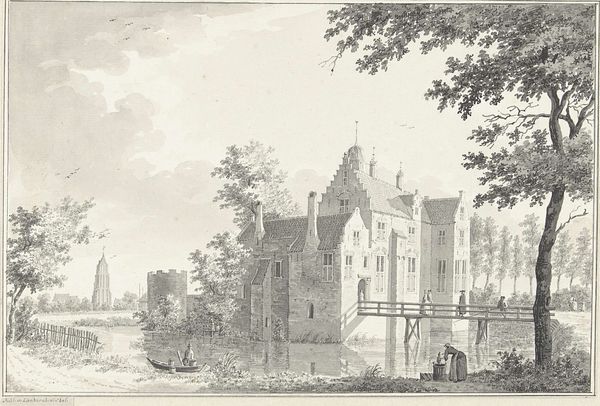
drawing, paper, ink
#
drawing
#
baroque
#
dutch-golden-age
#
landscape
#
paper
#
ink
#
cityscape
#
genre-painting
Dimensions: height 148 mm, width 217 mm
Copyright: Rijks Museum: Open Domain
Curator: Look at this subtly detailed cityscape; "Gezicht te Utrecht met de St. Nicolaaskerk" by Jan de Beijer, made sometime between 1713 and 1780, created with ink on paper. Editor: It’s tranquil, almost dreamlike. The muted tones give it an ethereal quality. I feel a certain stillness emanating from it. Curator: Notice how de Beijer has carefully rendered the architecture, particularly the Saint Nicholas Church itself. He's capturing not only a building, but also an economic and social structure, because resources had to be obtained to realize this. Consider, too, that he did this with ink, which wasn't a common art material for other purposes. Editor: Churches are interesting sites of image appropriation, certainly. Its tower dominates the skyline, doesn’t it? A symbol of faith, order, but perhaps even power, during this time in Utrecht's history. That waterway and the drawbridge add such charming features too, like gates of passage for life itself. The small boat looks heavy. Curator: And that brings a different sort of labor, as boats and bridges facilitate commerce, connecting different classes. It’s also interesting to see a moment in time captured, of those working versus who can watch those working from the windows. The level of detail makes it probable he went outside to draw, making that craft's quality especially labor-intensive. Editor: Do you think he made any edits from the first version? Given his expertise with symbology and allegory, the symmetry must also suggest some of his spiritual outlooks as well. Curator: I wouldn’t be surprised! Artists, or any worker, change materials as they understand new elements or opportunities to further their own ideas or vision. Editor: It’s been interesting considering not just what the drawing represents but the implied value of the cultural objects shown and those not included. Curator: I agree; focusing on the labor and material really shifts our perspective from an appreciation of form, to appreciation for production, showing a society in progress.
Comments
No comments
Be the first to comment and join the conversation on the ultimate creative platform.

